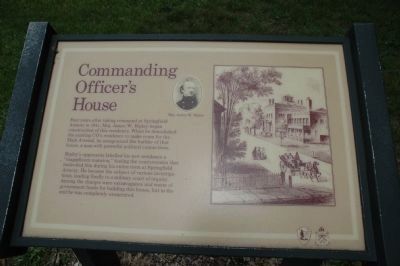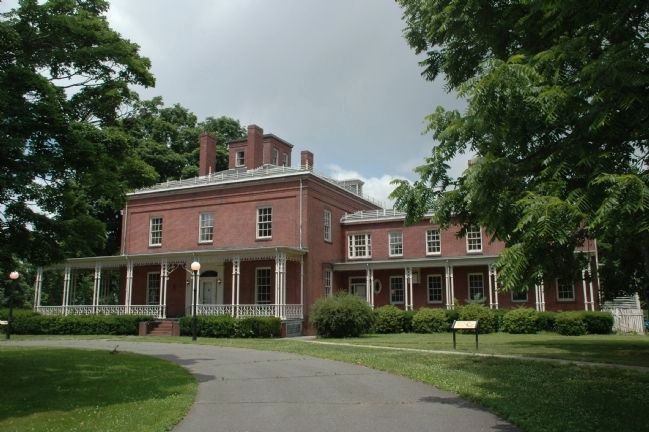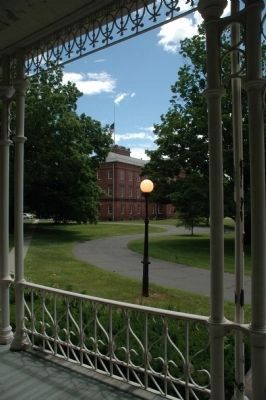Springfield in Hampden County, Massachusetts — The American Northeast (New England)
Commanding Officer's House
Inscription.
Four years after taking command at Springfield Armory in 1841, Maj. James W. Ripley began construction of this residence. When he demolished the existing CO's residence to make room for Main Arsenal, he antagonized the builder of that house, a man with powerful political connections.
Ripley's opponents labeled his new residence a "magnificent mansion,” fueling the controversies that bedeviled him during his entire term at Springfield Armory. He became the subject of various investigations, leading finally to a military court of inquiry. Among the charges were extravagance and waste of government funds for building this house, but in the end he was completely exonerated.
Erected by National Park Service, U.S. Department of the Interior.
Topics. This historical marker is listed in these topic lists: Architecture • Military. A significant historical year for this entry is 1841.
Location. This marker has been replaced by another marker nearby. It was located near 42° 6.46′ N, 72° 34.951′ W. Marker was in Springfield, Massachusetts, in Hampden County. Marker could be reached from State Street. The marker is beside the walkway leading to the Commanding Officer's House just behind the Main Arsenal building, Springfield Armory National Historic Site. Touch for map. Marker was in this post office area: Springfield MA 01105, United States of America. Touch for directions.
Other nearby markers. At least 8 other markers are within walking distance of this location. A "Magnificent Mansion" (here, next to this marker); Master Armorer's House (a few steps from this marker); Hay Road (within shouting distance of this marker); Main Arsenal (within shouting distance of this marker); From Arsenal to Icon (within shouting distance of this marker); Working for Perfection (about 300 feet away, measured in a direct line); Armory Square (about 300 feet away); Springfield (about 400 feet away). Touch for a list and map of all markers in Springfield.
Related marker. Click here for another marker that is related to this marker. This marker has been replaced with the linked marker.
Also see . . .
1. Springfield Armory National Historic Site. National Park Service website entry. (Submitted on June 11, 2010, by Howard C. Ohlhous of Duanesburg, New York.)
2. Brevet Brigadier General James W. Ripley. A biography hosted by the United States Army Ordnance Corps and School. (Submitted on October 2, 2014, by Byron Hooks of Sandy Springs, Georgia.)
Additional keywords. Springfield Armory Springfield Arsenal Ripley
Credits. This page was last revised on August 14, 2023. It was originally submitted on June 11, 2010, by Howard C. Ohlhous of Duanesburg, New York. This page has been viewed 1,048 times since then and 5 times this year. Photos: 1, 2, 3. submitted on June 11, 2010, by Howard C. Ohlhous of Duanesburg, New York. • Bill Pfingsten was the editor who published this page.


